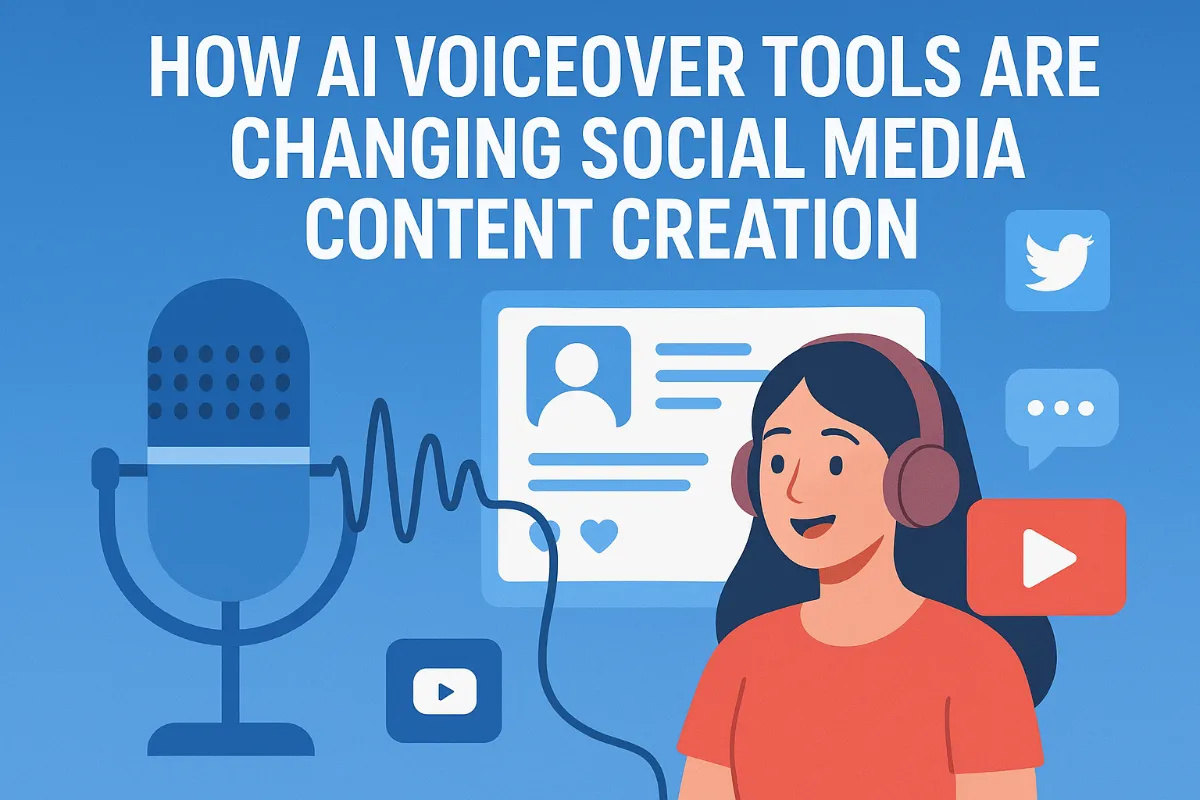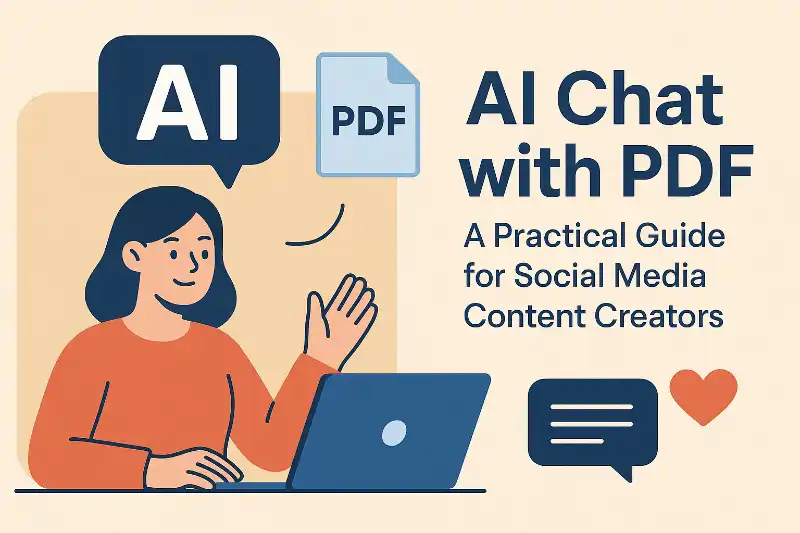Federated Learning for Social Data: Revolutionizing Content Creation and Social Media Marketing
Understanding Federated Learning
Imagine training ai models without ever exposing your sensitive data. That's the promise of federated learning, a revolutionary approach to machine learning. It's changing how we think about data privacy and ai collaboration.
Federated learning is a decentralized machine learning technique. It trains ai models across multiple devices or servers, like those at research.ibm.com, without directly exchanging data. This approach focuses on protecting sensitive information, such as PII (Personally Identifiable Information).
According to IBM Research, federated learning is becoming the standard for meeting new regulations for handling and storing private data.
Here’s how it works in practice:
- An initial model is distributed to client devices.
- Each device trains the model locally using its own data.
- Updates (not the raw data) are sent back to a central server, aggregated, and used to improve the global model.
- This process repeats iteratively, improving the model without direct data sharing.

There are different flavors of federated learning:
- Horizontal Federated Learning: Uses the same features but different users. For example, multiple bank branches might store similar customer data but for different individuals. Source: www.solwey.com
- Vertical Federated Learning: Employs different features but the same users. A bank and an energy utility sharing customer data but with different attributes (financial vs. usage history) is an example. Source: www.solwey.com
- Federated Transfer Learning: Applies knowledge from one domain to another in a federated setting. This is useful when you have limited data in a specific domain but can leverage knowledge from a related, data-rich domain. For instance, a new social media platform might use a model trained on a larger, established platform's data to quickly improve its own content recommendation system, without directly accessing user data from the established platform.
Now, let's look at how this can unlock new possibilities for content creation and social media marketing.
The Power of Federated Learning for Social Data
Imagine unlocking the power of social media data without compromising user privacy. Federated learning makes this a reality, offering a new paradigm for content creation and social media marketing.
Social media data is rich with insights, but it's also highly personal. Federated learning addresses this challenge by allowing analysis of this data without direct access to user information. This approach ensures that sensitive data remains private, as models are trained locally on user devices.
- Federated learning helps organizations comply with stringent data privacy regulations such as GDPR (General Data Protection Regulation) and CCPA (California Consumer Privacy Act).
- By processing data at its source, federated learning minimizes the risk of data breaches and unauthorized access.
- This decentralized approach aligns with the growing demand for privacy-centric solutions in the digital age.
One of the biggest advantages of federated learning is its ability to enhance content personalization. By training models on decentralized user data, social media platforms can gain a deeper understanding of individual preferences without ever directly accessing personal information.
- This leads to improved content recommendations, ensuring users see more relevant and engaging posts.
- Ad targeting becomes more precise, increasing the likelihood of conversions while respecting user privacy.
- Ultimately, this creates a more tailored and satisfying user experience.
Federated learning also revolutionizes social media analytics. It enables organizations to gain valuable insights into trends and user behavior while preserving privacy.
- This approach fosters a deeper understanding of community dynamics, helping platforms tailor content and features to better serve their users.
- The use of federated learning can lead to more accurate predictions and forecasting, enabling data-driven decision-making.
- As more computing shifts to mobile phones and other edge devices, federated learning offers a way of harnessing the firehose of data streaming minute-by-minute from sensors on land, sea, and in space. (What is federated learning? - IBM Research)
The ability to analyze social data without compromising user privacy opens new doors for ethical and effective content strategies. This leads us directly into how federated learning can revolutionize content creation itself.
Applications in AI-Powered Content Creation
Imagine a world where ai understands your audience better than ever before, without ever invading their privacy. Federated learning is making that vision a reality, transforming how we create content.
Federated learning enables ai algorithms to train on diverse social data, creating captions that resonate with a wider audience.
- By analyzing caption performance across various user groups, ai can learn which styles elicit the most engagement.
- Content creators can adapt caption styles to suit different platforms, from Twitter to Instagram.
- ai algorithms can generate captions that resonate with specific demographics, enhancing content relevance.
For instance, a fashion brand could use federated learning to tailor Instagram captions to appeal to different age groups or regional preferences. Here's how it works: The ai model, trained across many users' devices, learns patterns in caption engagement associated with different demographic signals (like inferred interests or location, not PII). It can then generate captions that are statistically more likely to resonate with a target demographic without ever seeing that user's personal information.
Hashtags are essential for discoverability, and federated learning can help identify the most effective ones.
- ai can identify trending hashtags in real-time using federated learning across diverse user data.
- The algorithms can suggest hashtags that boost content visibility, ensuring posts reach a broader audience.
- Federated learning enables hashtag strategies to adapt based on user behavior, maximizing impact.
Imagine a food blogger using federated learning to discover trending hashtags related to vegan recipes, increasing their content's reach.
Creating high-quality content consistently can be challenging, but ai-driven templates can help.
- Federated learning can generate content templates tailored to different user segments, ensuring relevance.
- By analyzing successful content formats, ai can identify what resonates with specific audiences.
- Content creators can produce high-quality content efficiently, saving time and resources.
A small business could use federated learning to create email marketing templates that are personalized to different customer segments, improving conversion rates.
As ai models evolve, federated learning will play a crucial role in refining content creation strategies. Let's now explore how federated learning optimizes content scheduling and publishing.
Transforming Social Media Marketing Strategies
Imagine if social media ads could understand each user's unique interests without ever invading their privacy. Federated learning is making this a reality, and it's poised to transform social media marketing strategies.
Federated learning allows for the creation of ad copy that truly resonates with individual users.
- By training ai models on decentralized user data, marketers can craft ads tailored to specific interests and behaviors.
- This leads to improved click-through rates and conversion rates, as users are more likely to engage with relevant content.
- The end result is a more engaging and personalized ad experience for everyone involved.
For example, a user who frequently interacts with posts about sustainable living might see ads highlighting eco-friendly products.
Finding the right influencers can be challenging, but federated learning offers a solution.
- ai models can identify the most effective influencers for specific target audiences by analyzing user preferences and behavior patterns.
- This allows for a more strategic matching of influencers with brands, ensuring that campaigns reach the right people.
- Ultimately, this improves the ROI (Return On Investment) of influencer marketing efforts, making them more efficient and impactful.

Understanding community sentiment is crucial for effective management.
- Federated learning allows for real-time analysis of community dynamics, providing insights into user sentiment and emerging trends.
- This enables organizations to identify potential crises early on and address them proactively, preventing small issues from escalating.
- The result is a more supportive and engaging community experience for all members.
As ai models become more sophisticated, federated learning will play a key role in shaping social media marketing strategies. Next, we'll explore how federated learning can enhance brand voice and tone optimization.
Overcoming Challenges and Limitations
Federated learning isn't without its hurdles. Let's explore some of the key obstacles and how they can be addressed to unlock the full potential of this technology.
One significant challenge is data heterogeneity. Data quality and distribution vary across different devices. Imagine training a model on social media data where some users primarily post images, while others focus on text. Dealing with this variability is essential for creating robust models.
- To mitigate this, techniques like data augmentation and transfer learning can be employed to balance the data and improve model generalization. For example, if a model is trained on image-heavy data from one group and text-heavy data from another, data augmentation could create synthetic text-like features for images, or transfer learning could adapt a model pre-trained on general text to better understand the nuances of the text-only posts.
- Addressing bias in federated learning is also crucial. For instance, if a model is trained predominantly on data from one demographic group, it may not perform well for others.
- Ensuring fairness and representativeness in ai outcomes requires careful monitoring and the implementation of bias detection and mitigation strategies.
Federated learning can be communication-intensive. Transmitting model updates between devices and a central server requires bandwidth. This can be a bottleneck, especially in areas with limited connectivity.
- Model compression and differential privacy can reduce bandwidth and computational requirements. Model compression, like quantization (reducing the precision of numbers) or sparsification (removing less important model weights), makes the updates smaller. Differential privacy adds noise to the updates, which can sometimes also help in reducing the amount of information that needs to be transmitted while still protecting privacy.
- Optimizing model updates for efficient transmission is also vital. This involves techniques like quantization and sparsification to reduce the size of the updates.
- Balancing privacy and performance tradeoffs is an ongoing challenge. More sophisticated methods are needed to ensure both security and efficiency.
While federated learning enhances privacy, it's not immune to security threats. Models can be vulnerable to poisoning attacks, where malicious actors inject faulty data to compromise the model.
- Protecting against model poisoning and inference attacks is essential. This involves implementing robust security measures to validate data and monitor model behavior.
- Ensuring the confidentiality of model updates is also critical. Techniques like secure aggregation and homomorphic encryption can safeguard user data.
- Implementing robust security measures to safeguard user data is an ongoing process. It requires constant vigilance and adaptation to emerging threats.
Addressing these challenges will pave the way for wider adoption of federated learning in content creation and social media marketing. Let's now dive into how federated learning can enhance brand voice and tone optimization.
The Future of Federated Learning in Social Media
The social media landscape is ever-evolving, and federated learning is poised to play a key role in its future. What trends and applications can we expect to see in the coming years?
- Integration with blockchain: Federated learning can be integrated with blockchain technology to enhance data security and transparency. This combination ensures that model updates are securely recorded and verified, reducing the risk of tampering or unauthorized access. For example, a social media platform could use blockchain to track the contributions of different users to a federated learning model, rewarding them with tokens for their participation.
- Development of more privacy-preserving algorithms: As federated learning matures, expect to see more sophisticated algorithms that further minimize the risk of data leakage. Techniques like differential privacy and homomorphic encryption will become more prevalent, ensuring that user data remains protected even during the model training process. This is crucial for maintaining user trust and complying with increasingly stringent privacy regulations.
- Adoption of federated learning in new social media applications: Beyond personalized content and ad targeting, federated learning can be applied to a wide range of new social media applications. Imagine using it to detect misinformation, identify hate speech, or even provide mental health support, all while preserving user privacy. The possibilities are vast and continue to expand.
Here are some specific application examples:
- Training a sentiment analysis model: Federated learning can be used to train a sentiment analysis model across multiple social media platforms without sharing user data. This allows platforms to understand the overall mood and tone of conversations, helping them identify emerging trends and potential issues. For example, a brand could use this to gauge public reaction to a new product launch, adapting their marketing strategy accordingly.
- Creating a personalized content recommendation system: A personalized content recommendation system can adapt to individual user preferences without ever directly accessing personal information. By training models locally on user devices, social media platforms can provide more relevant and engaging content, increasing user satisfaction and platform loyalty. This ensures that users see posts and articles that align with their interests, enhancing their overall experience.
- Improving fraud detection algorithms in social commerce: Federated learning can enhance the accuracy of fraud detection algorithms in social commerce. By training models on decentralized transaction data, platforms can identify suspicious activity and prevent fraudulent transactions without compromising user privacy. This is particularly important in the fast-growing world of social commerce, where trust and security are paramount.
Looking ahead, it's also important to consider the broader implications:
- Ensuring transparency and accountability: Transparency is essential in federated learning applications. Organizations should clearly communicate how federated learning is being used, what data is being processed, and how user privacy is being protected.
- Addressing potential biases and unintended consequences: As with any ai system, federated learning models can be subject to bias. It's crucial to monitor these models for fairness and take steps to mitigate any unintended consequences.
- Promoting responsible and ethical use of ai: The responsible and ethical use of ai in social media is paramount. This includes implementing safeguards to prevent misuse, protecting user privacy, and ensuring fairness and accountability.
The future of federated learning in social media is bright, with numerous opportunities for innovation and growth. As we move forward, it's crucial to prioritize ethical considerations and best practices to ensure that this technology is used responsibly and benefits society as a whole.
As we conclude our discussion on the future of federated learning, let's turn our attention to the final, crucial aspect: ensuring brand voice and tone optimization.
Enhance Your Social Media Strategy with Social9
Ready to revolutionize your social media game? Federated learning offers a wealth of opportunities, and Social9 is here to help you harness its power.
Social9's ai helps you effortlessly generate engaging social media content tailored to your brand voice. This is achieved by training ai models on your existing content and brand guidelines, learning your unique style without needing to directly access sensitive customer data.
Create compelling posts that resonate with your target audience and drive higher engagement.
Save valuable time and resources with automated content creation.
Craft smart captions that capture attention and boost engagement.
Discover trending and relevant hashtags to maximize your content's reach and visibility.
Optimize your social media presence with data-driven insights. These insights are derived from analyzing aggregated, anonymized user interactions with content, allowing Social9 to understand what works best without compromising individual privacy.
Access a library of professionally designed content templates to streamline your content creation process.
Get round-the-clock support from Social9's expert team.
Elevate your social media presence with Social9's comprehensive suite of tools.
With Social9, you're not just creating content but building a smarter, more effective social media strategy.





